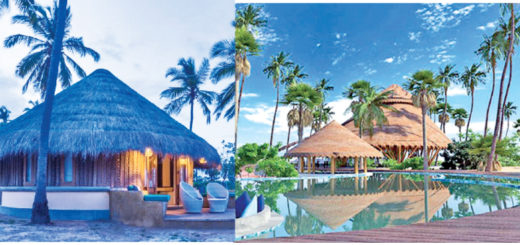Vicar and tea, but England a world away
by Jetwing · Published · Updated
The vicar is sipping tea on the lawn of St Andrew’s Hotel and chatting to his wife. The garden backdrop, a blaze of flowers, seems plucked from a rural English village. A vista of tea plantations rolls towards the horizon, reminding me that we’re in Asia and not extras in an old episode of TV’s Midsomer Murders.
The vicar – elderly, bespectacled and wearing a collar identifying him as a man of the cloth – tells me he visits Sri Lanka every couple of years and each time cherishes a few days at this “little England” called Nuwara Eliya.

Next day I spot another English couple enjoying tea – this time on the gently sloping lawn of the nearby Grand Hotel. It’s much the same, too, at the Hill Club, where a time-warp atmosphere is strongly brewed and I feel as if I’ve stepped uninvited into the heyday of the British Raj.
The Hill Club, a former “gentlemen’s club”, revels in fustiness – still recommending that male guests don jackets and ties for dinner. However, women nowadays are permitted to enter through any door; the “ladies’ entrance”, hidden round the side, has become no more than a bizarre curiosity.
“Nostalgic English visitors are the biggest component of our business,” reveals Upul Leukebandara, general manager of St Andrew’s Hotel. “Mind you, we’re seeing far more Australians these days.”
At Warwick Gardens, a century-old mansion, I’m a guest at tea on the lawn. Mohamed Faris, who runs this former planter’s dwelling reborn as a stylish boutique hotel, tells me that Britons “make up perhaps 90 per cent of check-ins but curiosity is bringing growing numbers of other nationalities, too.

“What’s more, they’re increasingly a cross-section of age groups, including young people who come for the cricket – which is huge in Sri Lanka.”
Later, in the middle of town and alongside the Windsor Hotel, I discover the Lion Pub which – except for the large number of Sri Lankans inside – could be the “local” in an English village.
Outside, Morris Minors and other shiny old English cars don’t seem out of place as they weave in and out of the traffic.
Nuwara Eliya, with about 30,000 townsfolk, is a popular inland destination in this island nation of 20 million people. In visitor numbers it’s second only to Kandy, the country’s biggest city aside from the capital, Colombo.
Tea-growing and tourism are Sri Lanka’s two biggest sources of revenue.

In the heart of tea-growing country, Nuwara Eliya became a “hill station” during British colonial rule, which ended at independence 64 years ago.
“Hill stations” – also common in neighbouring India – are places of high elevation, cooler than surrounding areas, where colonial officials could escape unfamiliar heat.
At 1800m above sea level, Nuwara Eliya suited British officials wanting respite from the tropics. Slowly, they created a facsimile of their homeland.
Among Sri Lankans, Nuwara Eliya is commonly referred to as “little England”. In recent years, entrepreneurs have refurbished decrepit English-style (and, to a lesser extent, Scottish-style) buildings to be boutique lodgings. Several have become charming B&Bs.
Famous old hotels have been restored to their original oh-so-English style.
Despite these changes, many of Nuwara Eliya’s British-era buildings still await inevitable rebirth. Their tumbledown days are numbered.
Affection for the colonial ruler seems strange when compared to the situation in many other ex-colonies where former administrations are pilloried and accused of ruthless exploitation. But Sri Lankan enthusiasm for the recent past appears genuine.
For instance, before travelling to Nuwara Eliya, I stroll through an in-house museum at Colombo’s Galle Face, one of Asia’s grand old hotels, and am directed to a prized exhibit: a small car bought by Prince Philip while on Royal Navy shore leave early in World War II. He used the vehicle for a trip to the eastern city of Trincomalee.
To wander through Nuwara Eliya is to be in no doubt that you’re in Asia, despite its reverence for things English. “It’s like India but without the crowds,” whispers an Australian tourist in the Lion Pub.
Anchoring the town is Lake Gregory, a 91ha artificial body of water now popular for boating and other water sports. It is named after the British colonial governor who supervised its construction – and there’s no campaign to call it something less British.
The 37 scenic waterfalls in the district include Devon Falls and St Clair Falls. Tea plantations still bear the names of English and Scottish counties. Flower-filled Victoria Park honours a former British monarch.
Graves of Britons who died in Nuwara Eliya are prominent. At the 18-hole Nuwara Eliya Golf Club is a memorial to a British military man claimed to have shot dead 1500 elephants. (The country’s pachyderm population recovered.)
I’m again reminded that this is Asia when I explore particularly Sri Lankan delights such as Sri Lanka’s highest village, Shantipura, with its white-painted Buddhist temple. From Shantipura I look across tea plantations with their female armies of Tamil tea pluckers to Nuwara Eliya below. The vista is pock-marked by local farmers’ smallholdings.
Among attractions at the edge of town is revered Sitha Temple, backing onto a forest. Hindu art adorns the walls and monkeys sit in branches eyeballing the faithful.
After a walk through an English-style rose garden at St Andrew’s Hotel, I have dinner in the hotel’s restaurant – a hushed wood-panelled room often likened to eateries at upper-class British clubs.
Despite the quirkiness of its British heritage, Nuwara Eliya is conveniently located for exploring Sri Lankan attractions. Hotel-run tours include, among others, visits to ancient city ruins (including the country’s number-one attraction, Sigiriya Rock, with its stairway to fortress-temple remnants and detour steps to 1500 year-old frescoes in a cave), Pinnawala Elephant Orphanage with its many cute animals, and Horton Plains National Park with deer, monkeys, wild boar and rarely seen leopards (but no elephants), varied bird life and diverse flora.
On one excursion, I pass a truck groaning uphill with its heavy load of strawberries.
“For export,” points the driver.
I ask where they’re going.
“To England,” he informs me.
I should have guessed.
IF YOU GO
GETTING THERE:
No direct flights connect Australia to Sri Lanka. Many Asian airlines flying from Australia also serve Sri Lanka, connecting in their home cities. A less-expensive option: low-cost carrier Air Asia X (airasia.com) from Gold Coast, Melbourne, Perth or Sydney to Kuala Lumpur, with connections there on Sri Lankan Airlines (srilankan.com).
STAYING THERE:
In Colombo, the most memorable lodging is the venerable Galle Face Hotel (gallefacehotel.com), one of Asia’s grand old hotels. Rates are modest because Sri Lanka remains one of Asia’s least expensive destinations. English-speaking driver-guides can be arranged at Colombo hotels for scenic road trips to Nuwara Eliya, costing about 12,000 rupees ($A87).
It’s a good paved road, climbing into tea-growing country; Sri Lankans usually talk about time taken rather than distance because winding roads slow traffic (in this case, the distance is only 103kms). A scheduled-service alternative between Colombo and Nuwara Eliya is Sri Lankan Air Taxis run by Sri Lankan Airlines, using low-level seaplanes taking off and landing on rivers, dams and lakes. Nuwara Eliya’s historic hotels include St Andrew’s and boutique-style Warwick Gardens (jetwinghotels.com)
Chris Pritchard
Source: http://au.news.yahoo.com/latest/a/-/article/14548692/vicar-and-tea-but-england-a-world-away/




